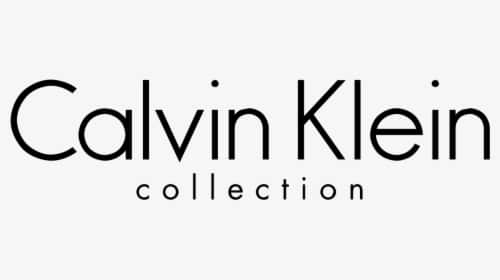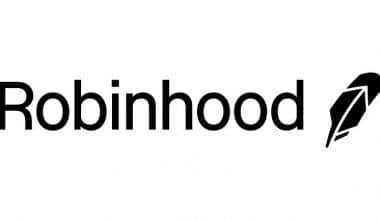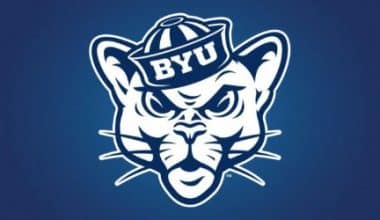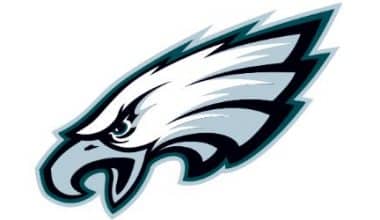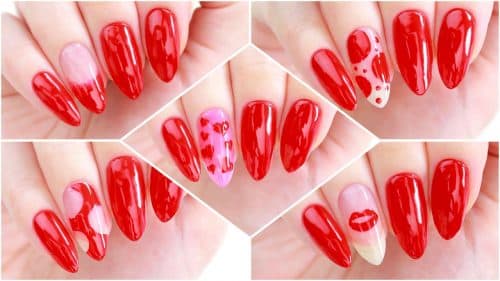Calvin Klein Inc. is an American fashion brand that was created in 1968 by Calvin Klein and his childhood buddy Barry K. Schwartz. The collection includes garments, purses, footwear, underwear, fragrances, and home furnishings for both men and women. It is a global lifestyle brand with strong, forward-thinking values and a seductive, but often simple, look. And through its clean look and unique designs, Calvin Klein has established a strong reputation as a pioneer in the American fashion market. It’s an instantly recognizable brand, from its logo design to its apparel and beyond.
However, the distinctive logo that we see today did not always exist. The sleek, modern logo we know today was once softer and less powerful. It looked like the current logo, but it didn’t have the “wow” factor that makes the Calvin Klein brand stand out.
Overview: Calvin Klein Logo
Calvin Klein has left such an indelible mark on our world that it’s practically difficult not to recognize the legendary brand and recognize it when you encounter one of its goods. Calvin Klein has become one of the world’s most beloved companies, as well as the number one fashion pick. This high-profile brand has spread beyond the borders of the country, becoming well-known both abroad and in the United States. Although numerous factors have contributed to Calvin Klein being one of the greatest companies in the market, its logo has played a significant role in the brand becoming so renowned.
The company logo created a big impression in the industry since it was one of the first to be both bold and magnificent. The logo represents more than simply the company name, truly embracing what the brand is and its history. Although there have been a few changes to the logo, they have not been significant enough to be considered a full redesign. The spirit of the design has remained consistent, always keeping up with new styles and ensuring that the brand stands out in a sea of logos.
In this post, we will look at the history of the Calvin Klein emblem as well as the brand itself. You’ll discover everything there is to know about the logo and how it has evolved through time to adapt to the latest trends and become the logo we know today.
Calvin Klein Logo Evolution
The Calvin Klein logo is one of the best fashion labels of all time, and it has always prioritized minimalism and clarity. Since the brand’s inception, the Calvin Klein logotype has been written in a lightweight sans-serif font because the people were the primary focus.
Celebrity advertising campaigns have always been one of the brand’s strengths, with the Calvin Klein emblem serving as a high-quality sign and the fashion label’s tagline serving as the major focus.
The Brand’s First Logo, 1968-1975
Calvin Klein’s first logo was established in 1968, and it served as the foundation for the business. With elegant and thin lettering that shone out against a white background, this logo got the company off to a good start. The logo was both elegant and personable, which was just what the brand required. The brand established a powerful first impression with its logo by selecting an exquisite font and using black letters.
A Logo Update From 1975 to 1992
The logo underwent its first alteration seven years later, with adjustments to the logotype. The font grew a little bolder, but it remained as attractive as in the previous version. The lettering was thicker and bolder in this second edition than in the previous one. Although still graceful, the letters now made a stronger statement and appeared more powerful. The letters appeared to be practical and professional in their own right.
Another Transition from 1992 to 2017
The previous logo modification lasted even longer than the first before it was time for another revision. The letters were still bold this time, but they were a little thinner, though not as thin as the earlier iteration. Although the style has altered, the font remained consistent with how it had previously appeared. Another change made to the mark was that the ‘i’s in the logo were now dotted rather than the rectangles utilized in the previous version. The letters were pronounced, and the whole design was appealing and unique.
Bold Letters, 2017-2020
When 2017 arrived, the brand decided it was time for another logo makeover, this time with bigger lettering than in any of their prior designs. They capitalized the letters and borrowed a font from one of their earlier logos. In comparison to how they appeared in the previous logos, these letters were rather close together. This logo maintained true to the previous versions, and the alterations were minor enough that, although making a difference in the overall appearance, they did not deviate from the core concept of the wordmark and black letters.
2020 – Present: Today’s Logo
Today’s logo is the most recent and presumably the one you’re most familiar with. This is the logo that the brand still uses today, and it is currently the go-to on the brand’s marketing materials. This logo didn’t differ much from the previous ones and was extremely similar to the one that came before it. The logo uses the same font, with the only difference being that the letters are both uppercase and lowercase. This logo is simple and clean, and it looks the same as the logo the brand has used since the beginning.
Calvin Klein Logo: What Makes The Logo Unique?
It’s easy to question what distinguishes this logo from the millions we see around the world. After all, this logo has become a legend in the industry, as well as one of the greatest in terms of effectively representing the brand. The wordmark is a wonderful example of a logo that is bold, identifiable, and effectively portrays the brand with only two colors.
#1. It’s Simple
Perhaps the most visible part of the brand, and what distinguishes the logo from others, is that it is as basic as possible. The logo consists of letters on a white backdrop. This makes it easier for customers to pay attention to the brand rather than the design details. It also shows how modest and classy the brand is since buyers only need to know its name to find it.
#2. Color Scheme
The colors selected for the visual identity, like any other logo, make a distinction. Instead of making the logo too complicated with too many colors and parts, they chose to use only two. This logo is usually found in three different colors: white, black, and grey. While the black version is the most frequent, the white version is commonly seen in athletics, and the grey version is on the brand’s other items. Colors are an important part of making a sophisticated, attractive, and timeless logo like the one that has helped the company become well-known.
#3. The Font
Because the visual identity is a wordmark, the design focuses primarily on the typography to make an impression and speak for itself. Although the typefaces used for the logo have evolved over time, they have all been similar and have maintained the brand’s appearance and feel. The font used in the present logo is attractive, classy, and just right. It contributes significantly to the logo’s iconic and refined appearance.
#4. The Design
There’s no doubt that the logo has a unique style that sets it apart from other logos that look similar. To show that it has a strong brand, the brand uses its marketing materials to create a certain atmosphere. They demonstrate this by including their brand in advertisements and merchandise. As a high fashion business, they knew their logo had to be versatile, with a shape and design that could easily be adapted to all of their needs. The logo ensures that the letters appear in a rectangle and are versatile enough to be utilized in a variety of ways.
The Calvin Klein Logo Is Vibrant, Modern, And Eye-Catching
In the new logo, only uppercase letters in a much thicker and heavier font are used. The sans-serif, Futura Light-inspired typeface is reminiscent of the brand’s previous logo without feeling too “vintage.” The logo was modified to modernize and streamline the company’s overall creative direction. The logo’s ability to modernize the old while not fully discarding it finds a careful balance.
The white background makes the black typeface stand out. The two colors go well together and make a strong contrast. The font is evenly spaced and spread out, which makes it look smooth and easy to read. The logo is significant and distinctive, and it is based on the company’s heritage. It is also scalable and adaptable, with a classic appearance. It is also more like the logos of top fashion companies in the United States, which are easy to remember but hard to forget.
Given the logo’s popularity and iconic significance, redesigning it was a risky step. Creative Director Raf Simons says that the new logo is “a celebration of Calvin Klein’s legendary underwear and pants, showing them in the world of art and recognizing their pop status.”
Read Also: HBO MAX LOGO: Evolution and All You Need
The responsiveness of the Calvin Klein logo also helps it.
When minimized, the sleek, modern, and powerful wordmark looks just as strong as it does in its original form. The simplified logo is made up of the brand’s monogram in the same font but with lowercase letters.
This is a striking design that makes excellent use of white space and a strong typeface to make a statement and demand attention. The new logo and monogram are a modest update that capitalizes the lettering, uses a new typeface and has closer spacing. The new logo is more readable and modern, and it is consistent with the brand’s history. It also guarantees that the brand remains relevant and current.
It is wise for firms to build logos and other graphics with responsive and easily changeable features. This ensures that your logo may shine with style and elegance regardless of the device.
The Calvin Klein Logo Redesign Cemented the Company’s Position as an Industry Leader.
The Calvin Klein emblem, like the brand itself, has a history and a legacy. Though it has been redesigned and renovated, the logo retains the sophistication and refinement that the company is known for promoting.
This design highlights the brand’s history and tradition while still oozing elegance and class. It straddles the border between modern and minimal, as well as traditional and grandiose.
Calvin Klein nailed it with its new logo. It still stands for the company as a whole, but it also gives the company a new part of its identity that makes it stand out from other fashion retailers.
Calvin Klein has a fantastic logo design that knows how to stay current.
History of Calvin Klein
Calvin Klein Inc., founded by Calvin Klein, is a world-famous fashion house known for its undergarments, trousers, and perfumes. Other items sold by the brand include shoes, purses, towels, and jewelry. Customers can also purchase accessories like as belts, sunglasses, and wallets in a variety of colors and styles.
Historical Background
Calvin Klein enrolled at the Fashion Institute of Technology in the fall of 1960. He earned his first full-time job in fashion as a copybook author at Women’s Wear Daily in 1961.
He began working at a studio that specialized in making garments using a fabric known as “whipped cream” after graduating with a degree in fine arts in January 1963. Klein got unsatisfied with his employment after three months and wanted a $100 raise. He resigned after his supervisor rejected him.
He quickly found work as a sketcher at Dan Millstein, a coat maker. This job, according to Klein, was a baptism of fire for him. Klein was asked by his boss to make copies of the clothes that were shown at a few Haute Couture fashion shows in Paris.
Despite loving her Paris Fashion Week experiences, Klein was upset by Millstein, who was known to be tough and volatile. Klein planned his exit for this and other reasons. He quickly got work at Haldon Limited, a manufacturer of faux-fur outwear. It was because of this job that he was first mentioned in the press in 1967.
Read Also: DIOR LOGO: The Story Of Christian Dior Iconic Brand Strategy
But he, too, grew tired of his job. He reached out to an old friend, Abe Morenstein, with whom he had previously worked at coat maker Dan Millstein. Morenstein also wanted to establish his own firm and calculated that it would cost $25,000 to get started.
The pair attempted but eventually failed, to raise financing. And just when Klein was about to quit, his childhood friend Barry offered them $2,000, which was enough to get them started creating samples. Klein gradually began spending Schwartz’s money on a regular basis, though Morenstein claimed he had no idea where the monies came from.
Morenstein sought to form a firm with Klein after collaborating on an apparel line. Klein, who was 25 at the time, had beaten him to the punch. He had previously formed Calvin Klein Ltd., excluding Morenstein and bringing in a new partner in Barry Schwartz.
He officially founded the corporation in late December 1967, but Morenstein believes Klein did not inform him until early 1968. As a result, Klein and Morenstein did not speak to each other for the next 24 years.
In the 1970s
Calvin Klein’s business reached new heights in the 1970s. He began introducing new products to Calvin Klein in 1971, including women’s lingerie, sportswear, and coats.
He won three straight Coty American Fashion Critics Awards from 1973 to 1975.
By 1977, the Calvin Klein brand had a $30 million profit. This was due to increased advertising and sales, as well as the introduction of new products such as shoes, sunglasses, furs, scarves, and other accessories to the market. They were able to reach a larger market by selling more things.
Calvin Klein was already selling women’s clothing at the time. However, they began marketing menswear in the 1970s. They also began marketing jeans, which made Calvin Klein famous until now. Within a week, they had sold over 200 000 pairs of jeans.
The renowned Calvin Klein logo, which is the company’s name written on the back pocket of the jeans, also debuted about this period, kicking off a branding trend that has lasted ever since. Naturally, other jeans brands followed suit.
Fragrances and Cosmetics
Calvin Klein began offering fragrances and cosmetics in the late 1970s, but these goods did not catch on as quickly as the clothing and accessories did.
As a result of the significant financial losses, Calvin Klein was forced to recall all cosmetic and fragrance goods from the market.
Calvin Klein focused on selling its ever-popular jeans over the following three years, therefore no new products were introduced to the market.
In the 1980s
Jeans were popular among young people in the 1980s, but Calvin Klein also introduced men’s and women’s undergarments.
Within a year, the new underwear lines alone brought in $70 million, and the business extensively promoted them with massive billboards and other advertising media throughout the 1990s. During this time, Mark Wahlberg, a well-known pop musician at the time, became the face of CK. Men’s underwear quickly became known as “Calvin’s.”
The Advertising Role in Calvin Klein’s Success
Calvin Klein has always relied heavily on advertising and branding to become the successful brand that it is today. This is especially true for underwear collections.
Calvin Klein used famous people to make his company more successful in the fashion world. Brooke Shields was one of the renowned faces that modeled Calvin Klein underwear in the 1980s, which increased interest in the brand.
More stores were opened not just in the United States, but in many other nations across the world as well. Calvin Klein clothing was sold at over 12,000 outlets worldwide, including several in the United Kingdom, Ireland, Japan, and Australia.
Calvin Klein was named “America’s Best Designer” in 1993, but the company went out of business in 1999. LVMH and Tommy Hilfiger, among others, have indicated an interest in purchasing Calvin Klein. Still, the asking price of $1 billion was too exorbitant, and none of the labels made a competitive offer.
CK’s Many Faces
Calvin Klein’s men’s underwear has a new brand ambassador in Justin Bieber, while CK’s women’s underwear has a new face in Kendall Jenner. Calvin Klein underwear sales increased due to the endorsement of these two prominent faces, making the brand even more popular than it was previously.
Ironically, Calvin Klein’s creator didn’t believe it was a good idea to utilize either celebrity to advertise the underwear lines, but it turned out to be a marketing genius for the company.
Calvin Klein executed a successful promotional campaign in 2016 to promote all of their collections at the same time because that was where their clients could interact with one another by revealing what they were up to in their Calvin’s.
This campaign was influenced by celebrities like Kendall Jenner, Justin Bieber, Shawn Mendes, Cameron Mendes, Fetty Wap, and Noah Centineo. It quickly went viral on social media, and Calvin Klein customers posted pictures of themselves wearing Calvin Klein underwear.
Calvin Klein’s Addiction
Popular In the 2000s, Calvin Klein perfumes included Obsession, Escape, and Eternity.
Many Calvin Klein clothing ads that were sexually suggestive were banned or stopped, but many of them were still used for perfumes.
Despite multiple complaints about the usage of the advertisements, the visuals appeared to increase scent sales, therefore the corporation took no further measures to discontinue employing controversial advertising strategies.
Every year, fans and fashion reviewers keep an eye out for Calvin Klein’s new collections and ranges. Calvin Klein knows how to attract and retain new customers by constantly offering new products and designs to their ever-expanding locations.
Sale 2002
Calvin Klein was fully in charge of his huge empire at the turn of 2000, with retail shops across America, Europe, Asia, and the Middle East.
Klein and his colleague Schwartz stated in 1999 that they were selling their company. At the time, the corporation made $170 million in sales but earned $5 billion in licensing fees. Klein intended to sell the company while maintaining complete control, thus it took nearly three years for Phillips-Van Heusen to locate a buyer.
Klein remained on board but was not given a title.
In Conclusion
Calvin Klein Ltd. is an upscale fashion label founded in 1968 by Calvin Klein, a well-known American fashion designer. The company, which has its headquarters in Manhattan, New York, is now owned by the global fashion conglomerate PVH Corp.
Calvin Klein designs modern, sophisticated clothing, footwear, handbags, underwear, home furnishings, and fragrances for men and women. It is a global fashion brand that embodies both bold, progressive principles and a seductive, sometimes minimal look.
Because of their original designs and clean look, the brand and the CK emblem have established a solid reputation as a pacesetter in the worldwide fashion business. From its apparel to its logo design and more, it’s an instantly recognizable brand.
PVH Corporation purchased Calvin Klein in 2002 and has concentrated not just on expanding the brand’s global reach but also on increasing its awareness, status, and significance. In 2020, it was thought that products with the Calvin Klein brand would bring in more than $6.2 billion around the world.
Related Articles
- Women Lingerie Brands: 48 Best Women Lingerie Brands
- BEST GOLF BRANDS IN THE WORLD: (Best-rated prices)
- Socks Brands: 25 Best Brands For Men And Women
- BAG BRANDS: 2022 Top 25+ Luxurious and Designers Bag Brands
